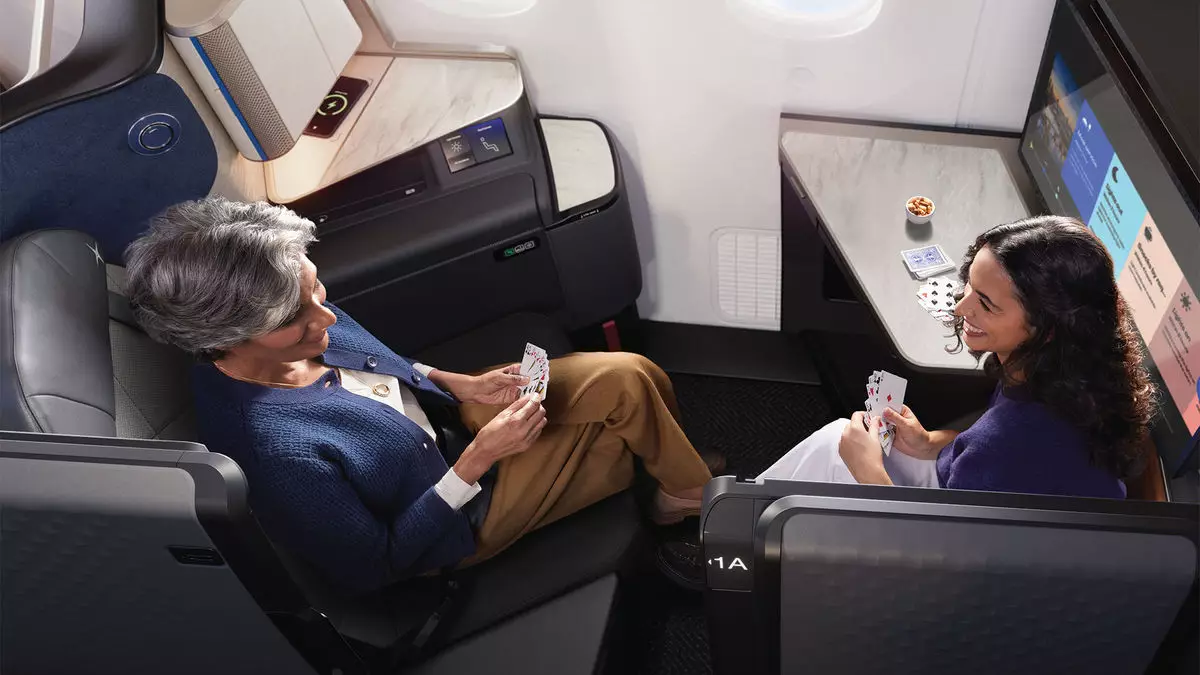United Airlines is set to dramatically transform the flying experience with its upcoming 787-9 Dreamliner fleet. Unlike traditional configurations that tend to merely shuffle seat counts around, United is clearly focused on catering to the evolving preferences of discerning travelers, particularly in the business class segment. The new Polaris Studio suites will redefine the luxury experience, boasting an impressive 25% increase in space compared to standard Polaris seating. These suites, equipped with a new design featuring four-across seating in the front row, offer passengers not just comfort but also an intimate workplace in the sky.
The introduction of features such as privacy doors and expansive 27-inch TV screens signals a shift in how airlines are accommodating their premium clientele. For those traveling with companions, the added ottoman enhances the experience by promoting interaction and shared enjoyment during the flight. In addition to the physical attributes, these suites promise a high-touch experience that includes amenities like caviar service and luxury skincare products—tangible symbols of the elevated experience United is aspiring to provide.
Strategic Focus on Premium Seating
United Airlines’ decision to reconfigure its aircraft underscores a calculated strategy to prioritize higher-yielding seats while decreasing the overall number of economy seats available. With only 90 standard economy seats being fitted into the Dreamliners—down from the 149 currently available—this shift reflects a broader market trend to boost profitability by enhancing the premium segment. A demand for business and premium economy seats has become evident in the post-pandemic travel landscape, and United’s approach mirrors similar strategies adopted by competitors such as American Airlines.
Notably, the introduction of 56 standard business-class seats and 35 premium-economy seats demonstrates a balanced approach that still acknowledges the existence of economy travel, even if it is being minimized. However, this move may leave budget-conscious travelers yearning for more than just the paltry offerings that remain. Despite claims of incorporating the “world’s largest economy in-flight entertainment screens,” the diminishing availability of economy seats could alienate a portion of United’s customer base.
Comments from Flight Attendant Union Raise Concerns
While United Airlines proudly touts its new configurations aiming to entice premium travelers, the announcement has not been devoid of dissent. The criticism from the flight attendants’ union highlights a significant aspect of modern airline operations: the well-being and input of cabin crew are vital to enhancing the overall passenger experience. The representatives, Sara Nelson and Ken Diaz, emphasize that upgrades should involve the very staff responsible for ensuring passenger satisfaction.
This tension points to a growing divide between airlines and their employees. As United Airlines focuses on luxurious cabin interiors, the risk is that they may overlook the importance of fostering relationships with flight crews, who are often the face of the airline experience. Neglecting the conversations surrounding worker contracts and welfare could lead to a misalignment in service quality, which ultimately impacts customer satisfaction.
As the airline industry continues to navigate its post-pandemic recovery, the balance between luxury upgrades and employee welfare will be pivotal. United Airlines’ ambitious project may indeed elevate air travel for some, but it remains essential for the airline to reconcile its operational strategies with the realities of those working tirelessly in the skies.


Leave a Reply